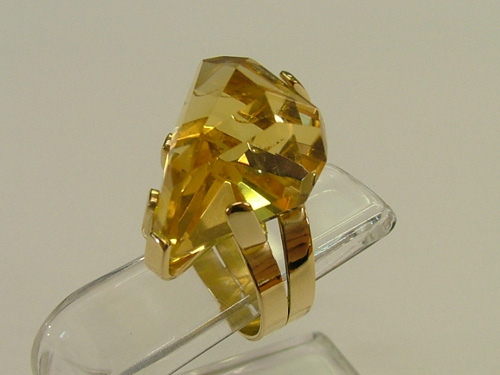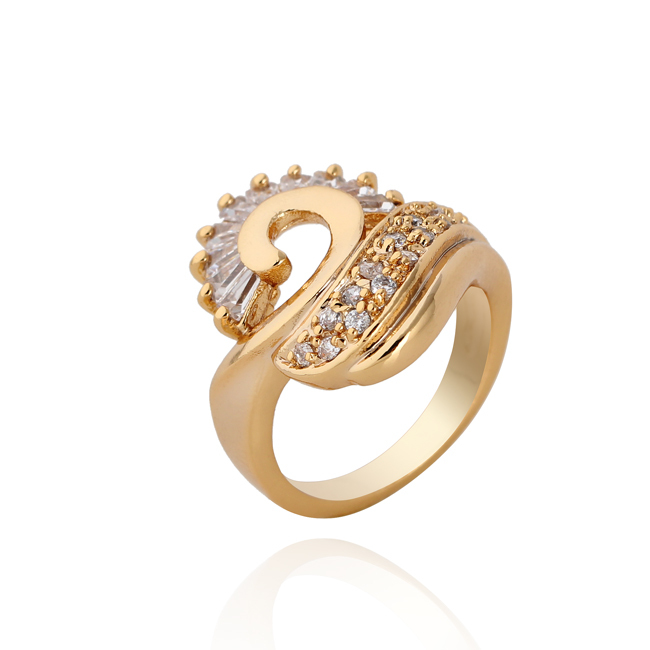Italian Jewelry Designers Biography
Source (goole.com.pk )Arieto Bertoia was born on March 10, 1915, in the small village of San Lorenzo, Friuli, Italy, about 50 miles north of Venice and 70 miles south of Austria. He had one brother, Oreste, and one sister, Ave. Another sister died at eighteen months old; she was the subject of one of his first paintings. Even as a youngster, the local brides would ask him to design their wedding day linen embroidery patterns, as his talents were already recognized. He attended high school in Arzene, Carsara, until age 15. He then accompanied his father to Detroit to visit his brother Oreste. Upon entering North America, his birth name Arri, which often morphed into the nickname Arieto ("little Harry" in Italian), was altered to the Americanized "Harry." Bertoia stayed in Michigan to attend Cass Technical High School, a public school with a special program for talented students in arts and sciences. Later, a one-year scholarship to the Art School of the Detroit Society of Arts and Crafts allowed him to study painting and drawing. He entered and placed in many local art competitions.
Cranbrook Academy of Art 1937-1943
“Probably the best instructor I ever had. Wonderful to be with; quiet, inspirational.”
- Robert Sailors
“It is to be regretted that the days are not twice as long, as he is also an accomplished painter and wood engraver.”
- Annual report on Harry as student, Cranbrook, 1940
By the fall of 1937, another scholarship entitled him to become a student, again of painting and drawing, at the Cranbrook Academy of Art in Bloomfield Hills, Michigan. Cranbrook was, at the time, an amazing melting pot of creativity attracting many famous artists and designers: Carl Milles, resident-sculptor, Maija Grotell, resident-ceramist, Walter Gropius, visiting Bauhaus-architect, and others. Students did not receive a degree; rather they discovered their passion. This residence at Cranbrook was a momentous turning point in Harry’s life and career.
In 1939, Eliel Saarinen, director of the art community, asked Bertoia, age 24, to stay on at the academy to re-open the department of metalworking. With the war-time need for metals, Bertoia was forced to concentrate on jewelry, which did not use as much metal. Many of his jewelry pieces were exhibited through the Nierendorf Gallery in New York. He also shared jewelry with his friends at Cranbrook and made wedding rings for Charles and Ray Eames and Edmund Bacon. The organic shapes and fine detail of the jewelry later evolved into the early sculpture forms. Harry continued an after-hour activity he had begun as a student, experimenting and producing one-of-a-kind prints and drawings later known as monoprints. The monotypes of the 1940s are considered some of his most imaginative graphics.
Bertoia Wedding - 1943
Fellow students at Cranbrook - Florence Shust (Knoll), Charles Eames and Eero Saarinen - were influential to Bertoia’s life in later years. In 1940, Harry met Brigitta Valentiner, the daughter of Wilhelm Valentiner, Director of the Detroit Institute of Arts and the foremost expert on Rembrandt in the U.S. Brigitta pursued him relentlessly, and he and Brigitta were married on May 10, 1943.
While at Cranbrook, Harry Bertoia sent 100 prints to The Solomon R. Guggenheim Museum of Non-Objective Paintings for evaluation. To his amazement, Hilla Rebay, the acquisitions director, kept all 100 prints. She bought some for herself and some for the museum. In 1943, 19 of those prints were exhibited by the Solomon Guggenheim Foundation. Harry had the most works by a single artist in that show, which included works by Moholy-Nagy, Werner Drewes and Charles Smith. Supported by a stipend from Karl Nierendorf of Nierendorf Gallery in New York, Harry continued to hold exhibits of jewelry and drawings. Harry designed two sleek tea sets; one for Eliel Saarinen which is in the Cranbrook permanent collection and the second at the Detroit Institute of Art.
California 1943-1950
In 1943, Bertoia amiably left Cranbrook to join Charles Eames in California to pursue ongoing experimental work on molded plywood. The plywood work stemmed from a continuation of the Eames/Saarinen Cranbrook chair design that won the Museum of Modern Art furniture competition. The award winning chair could not be successfully mass produced, so the mission was to find a way in which to do so. In addition, he contributed to the war effort making airplane parts manufactured by Evans Products Co, where Eames was director of Resarch & Development. Harry's innovative chair solutions made production possible and were adopted by Eames with no credit attributed to Bertoia. In frustration, Bertoia moved on.
He spent two years in San Diego, at Point Loma Naval Electrical Lab, where he worked on a project involving human engineering (ergonomics, although the word had not yet been invented) and stroboscopic photography designed to evaluate equipment. This is where he began making metal sculptures after hours, while continuing to create the monoprint drawings. In 1945, Harry held a show of his monotypes at the San Francisco Museum of Art. He became an American citizen in 1946. His daughter Lesta and son Val were born in California.
Early years in Pennsylvania 1950-1960
“Physically, he was stocky and powerfully built, capable of feats of strength. Yet he was soft-spoken, slow to anger, and gentle in his actions.”
- June Kompass Nelson
Bertoia Family Picture
In 1950, at the invitation of Hans and Florence Knoll of Knoll, Inc. furniture design company, Harry moved to eastern Pennsylvania with his growing family. The Knolls had seen his work at Cranbrook and suspected he had more ideas inside. They offered him free rein to design what he wished - furniture or sculpture - with full credit and complete recognition of his work, which was their policy with all designers. The Bertoia Diamond chair series was introduced in 1952 by Knoll. Bertoia also designed all the jigs for the production of the items. Harry set up shop in Bally in an old leaky garage building. The chair became part of the “modern” furniture movement of the 1950s. In the span of a couple of years, Bertoia completed several chair designs for Knoll. They compensated him handsomely for his wildly popular work, enabling Bertoia to purchase the farmhouse he had been renting, as well as his shop in Bally. Daughter Celia was born in Pennsylvania. The 1800’s rural stone house and the shop are still in the family.
MIT Sculpture
The first architectural sculpture commission that Harry earned was in 1953 for the General Motors Technical Center, thanks to designer and Cranbrook pal Eero Saarinen. Also commissioned by Eero Saarinen was the altar piece in the Massachusetts Institute of Technology Chapel, created in 1955. This is one of the most striking sculptures by Harry Bertoia. It ushers in the contemporary era of spacial sculpture, liberated from a base.
In 1957, Harry received a grant from Chicago's Graham Foundation, affording him the opportunity to return to Italy for the first time since 1930. He visited relatives and most of the great Italian museums, reveling in the travels. He never managed to return to Italy again, although he fervently wished to do so. During this period, he began earning awards, which would continue for the rest of his life. The first European exhibit of his sculptural work was at the US Pavilion of the 1958 Brussels World's Fair.
1959 brought the first of many sculptural shows to the Staempfli Gallery, New York. They held a retrospective show in 1981. Each exhibition boasted beautiful full color catalogs.
The drawings, or monographics, were part of Harry’s creative process throughout his career. Many of them clearly show his planning and experimentation with ideas for sculptures. He enjoyed the way that the free form medium of ink and paper permitted him to get his ideas on paper quickly and spontaneously. June Kompass Nelson authored an informative and well-illustrated book on the monoprints entitled Harry Bertoia, Printmaker, in 1988.
Tonals and Sonambient 1960-1969
In 1960, Harry Bertoia started the exploration of tonal sculptures. The "tonal", or sounding sculpture, is the art that is most often associated with Harry Bertoia. Their sizes vary from a few inches all the way up to 20+ feet. Many metals were used for the rods, the most common being beryllium copper known for its wide range of color variations. Some rods are capped with cylinders or drops of metal, which, by their weight, accentuate the swaying of the tonal rods. Harry and Oreste (his brother) both loved music and spent endless happy hours experimenting and finding new sounds to incorporate into Sonambient, the auditory and visual environment created by the tonals.
Italian Jewelry DesignersJewelry Desgin Sketches Ideas 2014 Neclkace Ring Earringes Gallery Bangles Software Drawing Images Photos Wallpapers

Italian Jewelry DesignersJewelry Desgin Sketches Ideas 2014 Neclkace Ring Earringes Gallery Bangles Software Drawing Images Photos Wallpapers

Italian Jewelry DesignersJewelry Desgin Sketches Ideas 2014 Neclkace Ring Earringes Gallery Bangles Software Drawing Images Photos Wallpapers

Italian Jewelry DesignersJewelry Desgin Sketches Ideas 2014 Neclkace Ring Earringes Gallery Bangles Software Drawing Images Photos Wallpapers

Italian Jewelry DesignersJewelry Desgin Sketches Ideas 2014 Neclkace Ring Earringes Gallery Bangles Software Drawing Images Photos Wallpapers

Italian Jewelry Designers JEWELRY DESIGN SKETCHES IDEAS 2014 NECKLACE RINGS EARRINGS GALLERY BANGLES SOFTWARE DRAWING IMAGES PHOTOS WALLPAPERS

Italian Jewelry DesignersJewelry Desgin Sketches Ideas 2014 Neclkace Ring Earringes Gallery Bangles Software Drawing Images Photos Wallpapers

Italian Jewelry DesignersJewelry Desgin Sketches Ideas 2014 Neclkace Ring Earringes Gallery Bangles Software Drawing Images Photos Wallpapers

Italian Jewelry DesignersJewelry Desgin Sketches Ideas 2014 Neclkace Ring Earringes Gallery Bangles Software Drawing Images Photos Wallpapers

Italian Jewelry DesignersJewelry Desgin Sketches Ideas 2014 Neclkace Ring Earringes Gallery Bangles Software Drawing Images Photos Wallpapers

No comments:
Post a Comment